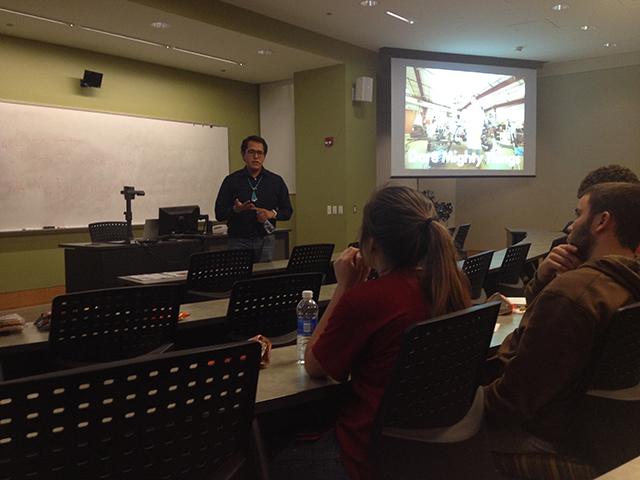A member of the NASA team working on the Mars rover, Curiosity, visited Centennial Campus Thursday to celebrate Native American Heritage month.
Multicultural Student Affairs invited Aaron Yazzie, a Native American, for its inaugural Indigenous Speaker Series. Yazzie spoke to students, faculty members and visitors about his career as a mechanical engineer.
“Something I have come to realize is that my experiences, my goals and struggles are all unique because I was born into a Native American family,” Yazzie said.
Yazzie said that growing up, he never thought he would one day work with the high-tech equipment of NASA because his parents were raised in homes that didn’t have running water.
Yazzie said he is from a Navajo reservation in Holbrook, Ariz., where there were just a few thousand people and there was only one stoplight.
“I didn’t know [college] was possible for me” Yazzie said.
He said he applied to Stanford University on a whim, after being informed by a representative of the university several years before it was time for him to begin applying to colleges.
Yazzie graduated from Stanford in 2008 with a bachelor’s degree in mechanical engineering and began his career at the NASA Jet Propulsion Laboratory.
Yazzie said he was part of the testing team that was crucial to the February success of Curiosity.
The then rover made its greatest accomplishment when landing for its first drill into the red planet, August 2012.
The drilling allowed for the rover to obtain a sample of soil to be analyzed with hopes of finding evidence of the sustainability of life on the planet.
“That was the most beautiful thing our team had ever seen,” Yazzie said, referring to an actual photo of the Curiosity on Mars holding the soil sample.
According to Yazzie, analyzing the soil sample suggested the possibility of Mars having sustained life.
“It’s a big deal because that’s the reason why we sent Curiosity up there,” Yazzie said.
Yazzie, and other members of JPL’s Sample Acquisition and Processing team, developed sequences for the robot to follow after years of testing.
According to Yazzie it took a total of three years to get the rover to the point where it could successfully drill.
“I thought it was really interesting how much time and testing went into getting the rover perfect for Mars,” said Rohn Springfield, a junior in business administration.
Ian Stroud, the assistant director of Native American Student affairs, said that Native Americans aren’t just part of history—they are still relevant today.
“I hope to continue to bring to the campus Native American professionals,” Stroud said.
Yazzie said Curiosity will next be traveling to a mountain near the crater the rover landed on to hopefully discover more, but that will take some time.
“It drives as fast as an ant can walk,” said Yazzie.
Yazzie is now working on proposals for new instruments to join the rover in 2020.
He attributes much of his success in college to the connections and opportunities he gained through the American Indian Science and Engineering Society.








